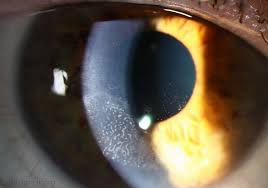Table of Contents
ToggleUnderstanding the LASIK and RPF Conundrum
The dream of having a sharp, clear vision without glasses or contact lenses is a common aspiration for many.
LASIK, short for Laser-Assisted In Situ Keratomileusis, has become a revolutionary eye surgery enabling people to achieve this dream, transforming countless lives by correcting vision problems like nearsightedness, farsightedness, and astigmatism. However, for those who aspire to join the Railway Protection Force (RPF) as a constable, a pressing question arises—is LASIK a green signal or a red flag?
In this blog, we will explore this issue in depth, providing valuable information and insights for RPF constable candidates, ophthalmology enthusiasts, and medical professionals.

LASIK and Medical Standards
Before we discuss the specific requirements of the RPF, it’s essential to understand what LASIK entails from a medical perspective. LASIK is generally considered safe and effective, but it does come with some potential risks and considerations:
- Visual Stability: Post-LASIK, it takes time for the eyes to stabilize. During this period, vision might fluctuate, which is a crucial consideration for professions demanding consistent visual acuity.
- Dry Eyes: A common side effect of LASIK, dry eyes can impact visual clarity and comfort, affecting performance in roles that require long hours of vigilance.
- Glare and Halos: Some patients experience these visual disturbances, particularly in low-light conditions, which can be problematic for night shifts or operations in dimly lit environments.
- Undercorrection or Overcorrection: These issues might necessitate additional procedures, adding further complexity to the candidate’s eligibility.
These factors, while relatively uncommon, are pivotal for professions demanding optimal visual acuity and performance under various conditions.
RPF Constable: A Demanding Role
The position of an RPF Constable is multifaceted, requiring a keen combination of physical stamina and mental vigilance. Key responsibilities include patrolling railway premises, managing law and order situations, and ensuring the safety of passengers. This position requires excellent eyesight and quick reflexes, making visual acuity a vital attribute.
The Indian Railways Medical Manual (IRMM) establishes rigorous medical standards for recruitment. While these standards may evolve over time, the primary focus remains on visual acuity, colour perception, and overall eye health.
LASIK and RPF: The Official Stance
Historically, Indian Railways has adopted a cautious approach regarding LASIK surgery in its recruitment processes for specific positions. This policy arose from concerns that the potential long-term effects of LASIK could affect individuals’ performance in demanding roles.
However, a significant shift in this perspective has recently occurred.
The Legal Perspective
In a significant ruling, a Division Bench directed the Railways to revisit its decision disqualifying candidates with a history of LASIK surgery for the post of constables (RPF).
The appellants, who had appeared in a competitive examination for RPF constables, were held unfit for service in categories A and B of the Railway Medical Manual, 2000 due to their LASIK surgeries. They contested this decision, arguing that the policy was implemented almost three years after the advertisement date and thus should not apply to them.
The Bench established a committee of ophthalmologists tasked with studying and developing guidelines for assessing the medical fitness of candidates undergoing LASIK surgery. The committee’s findings, published in 2011, noted that LASIK had only been available in India for a decade at the time.
Current Guidelines
According to the latest report, the RPF constable selection process requires candidates to meet the stringent medical standards set by Indian Railways.
Candidates must meet the minimum medical standards defined by the Railways, specifically the “B1” category.
The Honorable Supreme Court of India deliberated on the medical fitness of candidates who have undergone LASIK surgery.
The following determinants for the medical fitness of candidates who underwent LASIK surgery were established:
Medical Examination Categories:
- A1
- A2
- A3
For all the above three categories, candidates who have undergone LASIK surgery are deemed UNFIT.
- B1
- B2 (which includes RPF in B1)
Candidates in these categories are considered FIT after undergoing LASIK surgery, provided they meet the following criteria:
- No complications from LASIK surgery are present.
- LASIK surgery must have been performed at least one year prior, verified by a medical certificate from the specialist who conducted the procedure.
- Post-LASIK residual corneal thickness must be no less than 425 microns, as determined by pachymetry.
- Visual acuity must conform to the standards specified in Para 512(1)(A) of IRMM, Vol. I, Third Edition 2000.
- The fundus should appear normal.
- There should be no signs of progressive eye disease.
- C1 & C2
For these categories, candidates who have undergone LASIK surgery are deemed FIT.
The Need for a Comprehensive Medical Examination
To accurately determine eligibility, a thorough medical examination is essential. This examination will assess:
- Visual Acuity: The capacity to maintain clear vision at various distances.
- Corneal Thickness: The remaining thickness of the cornea post-LASIK procedure.
- Overall Eye Health: Any potential complications or underlying eye issues.
Note:
Candidates must provide a mandatory declaration regarding any past surgeries. Alongside this declaration, the examining medical officer will utilize all available equipment and consult specialists, when possible, to arrive at a reasonable assessment of the declaration’s accuracy.
For candidates considering LASIK, it’s essential to discuss career goals with an ophthalmologist and stay informed about the latest medical guidelines and RPF recruitment notifications. Additionally, exploring alternative career options may be wise if LASIK presents a significant obstacle.
Summing Up
Navigating the intricacies of LASIK and RPF recruitment can be challenging, but understanding the nuances helps make informed decisions about career paths and eye health. With evolving medical guidelines, the future holds promise for LASIK candidates aspiring to join the RPF as constables.
If you’re still unsure about your eligibility or need personalized advice, consider booking a consultation with a medical professional specializing in LASIK procedures and occupational health.
Stay informed, stay prepared, and best of luck on your journey to joining the Railway Protection Force!













